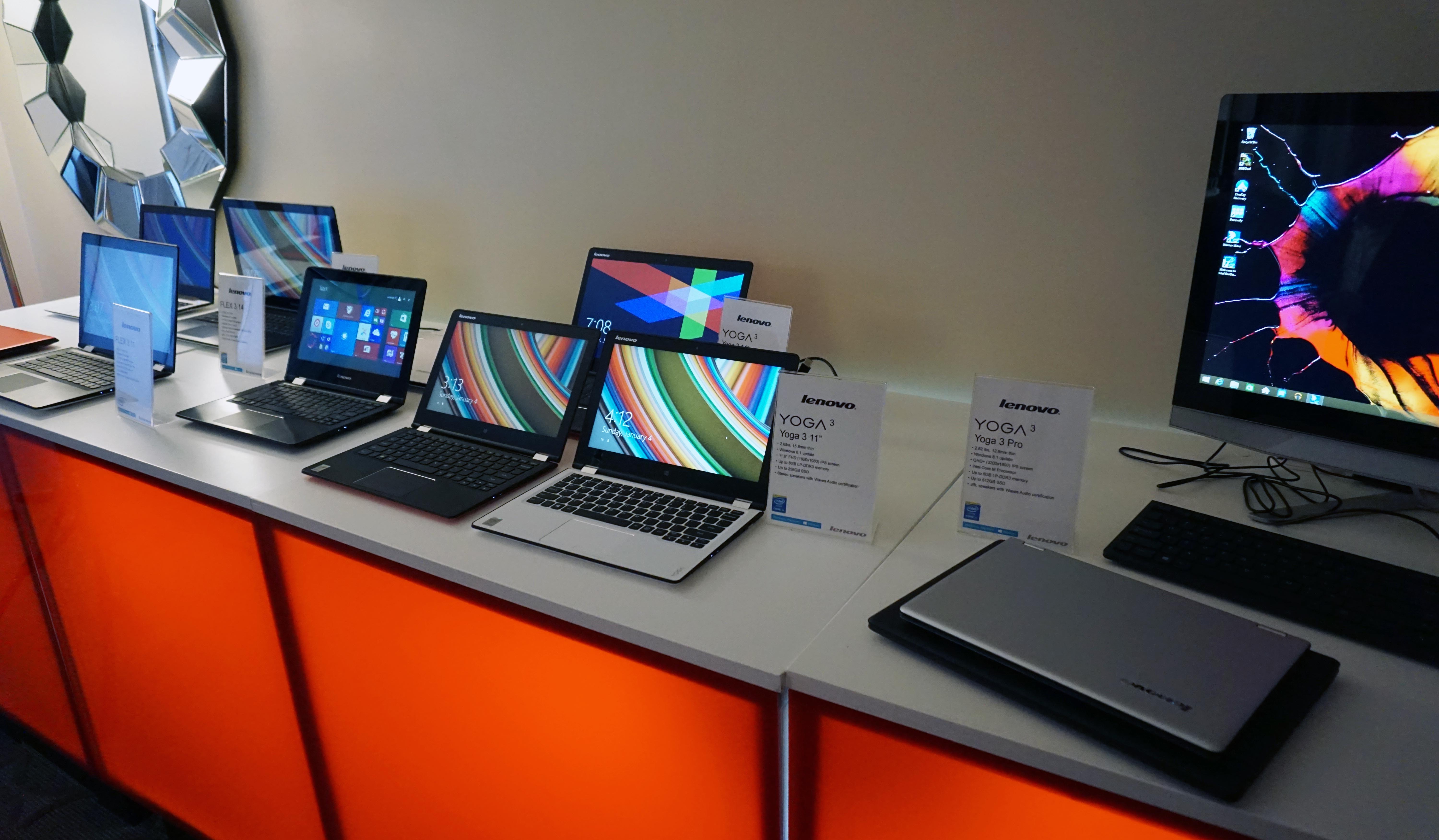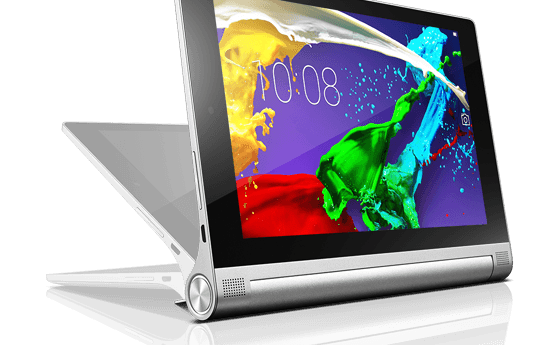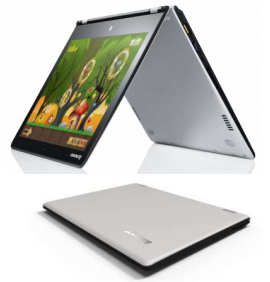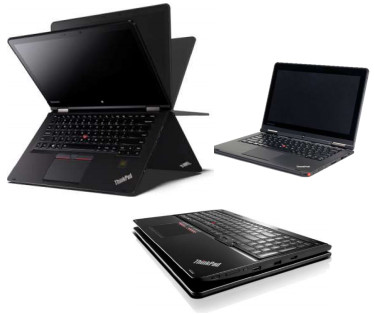Lenovo Gets Flexible With New Range Of Yoga Devices
Lenovo refreshed its flexible Yoga lineup at CES today with an 8 inch Windows version of the Yoga Tablet 2, 11" and 14" models of the Yoga 3 convertible, and 12", 14" and 15" versions of the new ThinkPad Yoga convertible notebooks for professionals.
Lenovo's original Yoga Tablet was an Android tablet. Then Lenovo made two versions of the Yoga Tablet 2, one with Android 4.4 (launched last fall) and one with Windows 8.1, which Lenovo launched today. In terms of internals, there is not much changed from the Android version, other than the CPU. Both are running a quad-core Atom, but the Windows version comes with a newer Atom that is clocked at 1.86 GHz, while the Atom for the Android tablet is clocked at 1.33 GHz.
Both tablets have a Full HD 8" screen, 2 GB of RAM, 32 GB of storage (although at least 10 GB or so should be occupied by Windows itself on the new model), 8 MP rear camera, 1.6 MP front-camera with HD recording, and a 6400 mAh battery.
The special feature of the Yoga Tablet 2 is the AnyPen technology, which allows any regular pen to be used as a stylus and the user to draw much more accurately than would be done with a finger. Lenovo didn't say how the magic happens, but the technology seems somewhat similar to Qualcomm's ultrasound-based pen technology.
However, if that was that case you could also draw somewhere close to the tablet on a different surface, and the drawing would be drawn on the tablet digitally as well. It's also not possible for Lenovo to be using the same technology because the tablet uses an Atom chip, not a Snapdragon chip, which would be required for it to work. Still, it's good to see more innovation in how digital pens work these days.
The Yoga Tablet 2 with Windows 8.1 will be $299 and should come out this month.
Lenovo launched the Yoga 3 convertibles as well, which are notebooks that can take four different modes: laptop, stand, tent, and tablet. The 14" version seems to be the more feature-packed one with a "Core i" Broadwell chip, while the smaller one has only a lower performance Core M chip to keep the heat and the power consumption down. The two devices will start at $799 and $979, respectively, and they'll be available in March.
Get Tom's Hardware's best news and in-depth reviews, straight to your inbox.
The ThinkPad Yoga notebooks convert in much the same way as the Yoga 3 devices, but they are thicker machines that have more GPU power under the hood. All three models come with Intel "Core i" Broadwell chips. The bigger models have an option for discrete Nvidia GPUs, while the largest can also get an optional 3D RealSense camera. All three notebooks support digitizers but the active pen is optional.
Their price points will start at $999 for the smallest of the three, and $1,199 for the biggest two. Lenovo will begin selling them in February.
Follow us @tomshardware, on Facebook and on Google+.
Lucian Armasu is a Contributing Writer for Tom's Hardware US. He covers software news and the issues surrounding privacy and security.
-
nukemaster I have to ask why we went from a flipped screen that would lay flat over the keyboard to having a keyboard on the bottom in tablet mode.Reply
This make little sense to me since I am sure the keyboards do not take to pressure like the bottom of a convertible notebook.
Flipping the screen and having it over the keyboard also looks nicer. -
swordrage ReplyI have to ask why we went from a flipped screen that would lay flat over the keyboard to having a keyboard on the bottom in tablet mode.
This make little sense to me since I am sure the keyboards do not take to pressure like the bottom of a convertible notebook.
Flipping the screen and having it over the keyboard also looks nicer.
You mean like the one in ThinkPad twist? Or the x230T, or Fujitsu Lifebook T 7xx/9xx series? I really liked those concepts. Probably they are not confident leaving the screen attached only at one single rotating point for some reason. But I never heard anyone breaking those things. Having the keyboard and touch pad exposed to the fingers or any friction in the yoga design doesn't make sense to me either.



